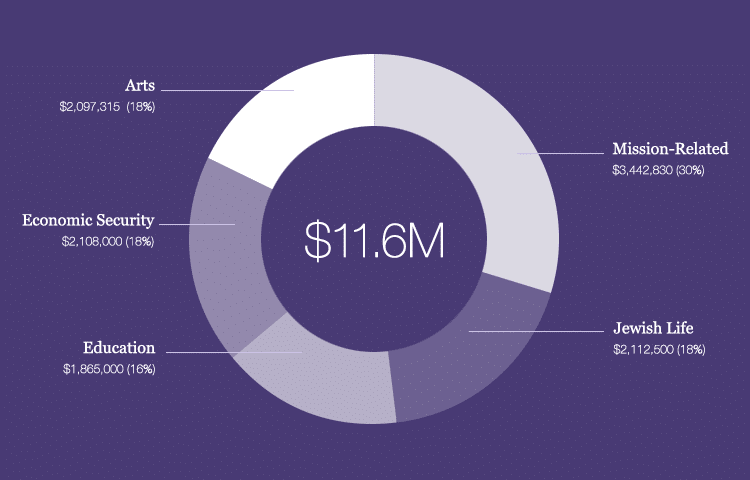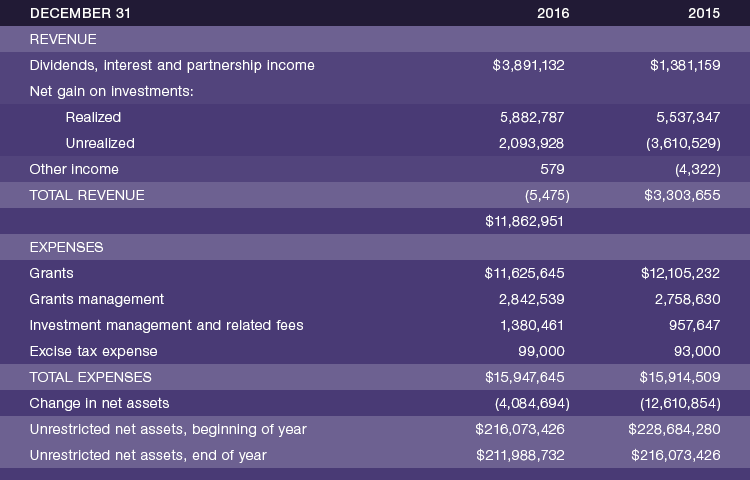2016 Annual Report
A Message from Leadership
October 17, 2017
Dear Friends and Colleagues,
As we write this introduction to our 2016 Annual Report, we see the world changing around us. Certainly, the election buzz throughout last year impacted many of our grantees and our own staff and board, but we did not anticipate the seismic shifts that came post-November. While this Annual Report addresses our 2016 grantmaking and finances, things have changed — so disturbingly and across so many fronts — that it would be unreasonable for us to write now about 2016 without some acknowledgment of those shifts.
Traumatic upheaval has forced us and our peers in philanthropy to take stock of the current political landscape and our role in providing stability through it. From an independent press to the importance of science and facts; from the words inscribed on the Statue of Liberty to hard-won civil rights, we have recently had to rejoin fights we thought were in our past and steel ourselves for a challenging future.
Yet this perspective only heightens the value of the work our grantees accomplished in 2016.
Our grantees’ work has never been easy, but in 2016 and beyond we have been fortunate to be part of a community — of foundations, nonprofit organizations, and people — who are resilient, smart, creative, and adaptive. We will continue to step up and do what is required, as daunting as our tasks may be.
Last year, we were again reminded of the value of our responsiveness, particularly when it’s paired with a longstanding commitment to addressing large, seemingly intractable problems. For example, our Economic Security program helped launch a cross-sector conversation about how low-wage workers are impacted by the so-called gig economy. That inquiry is turning into action this year — with multiple funders, practitioners, and policy makers at the table — all working together to ensure programs and benefits cover both new and traditional gig workers, from Lyft drivers to domestic workers.
HopeSF, San Francisco’s 20-year initiative to rebuild public housing communities, hit a significant milestone in 2016 when the last residents of Bayview’s Hunters View public housing project moved across the street into new buildings. The challenges, however, continue. We need to rebuild that community’s fabric and improve residents’ access to opportunity with the same resolve with which we have rebuilt their housing.
The Fund’s Education program began a concerted effort in 2016, committing to improve how we train, support, and retain the teachers upon whom public school students rely. Reversing the teacher shortage in our schools and revitalizing our school systems’ deteriorating ability to provide challenged children with the education they need and deserve will take perseverance to address — but this is the task we have set for ourselves.
Similarly, the artistic community found itself fighting for survival in 2016. In addition to continuing our ongoing support for arts education and access, our Arts program began working with many partners to address issues of affordable space. In Jewish Life, our program continues to build bridges between faith communities, asking hard questions now because it is interconnectivity and our shared humanity that is required to build a better future. The events of and since 2016 underscore the need for our continued investment in interfaith understanding and organizing.
On an intimate level, we also take note of the loss of our beloved board president, William S. Goldman — who had just begun his leadership term at the end of 2016. He died, as did his 6-year-old daughter, in a tragic accident in July 2017. Bill was more than our colleague, family member, and friend. He was a man whose compassion and intelligence helped us to come together in the ways that sustain. To call his death a loss does not even begin to encompass the truth. We are truly diminished.
The world may have dramatically changed around us, but we know it will change again, and again, and again. The Walter & Elise Haas Fund is committed to being here for the long run. We will keep asking the hard questions and seeking opportunities and answers in collaboration with all of you, through times of stability and times of chaos. Regardless of the political climate, our goal remains the same: to ensure access and opportunity, building a more equitable future for us all.
Sincerely,
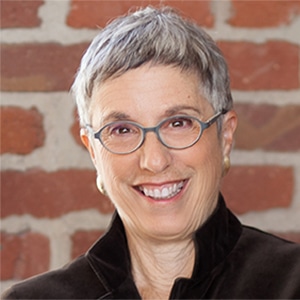
Pamela H. David
Executive Director
Peter E. Haas, Jr.
Board President
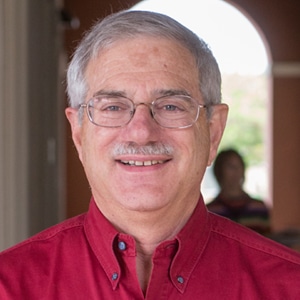
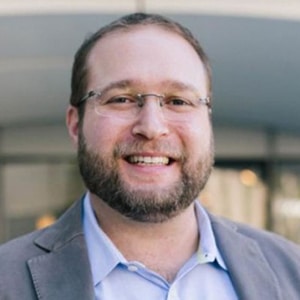
In Memorium
Bill Goldman
On Thursday, July 13th, 2017, William S. Goldman died in a tragic accident. Shortly after, his daughter, Marie, died from injuries suffered at the same time. We remember both with love and affection. The memory of the righteous is a blessing.
On January 20, 2017, the day our current president was inaugurated, Bill Goldman wrote:
“Now is our moment, to demonstrate the courage of our convictions, to push back constantly against the waves of darkness, to prove over and over that the world is better than this. It will not be fun. It will not be easy. But it will be done. Let us escape from our complacent lives, let us overcome our fear and terror. Let us give our lives a lasting meaning beyond what we believed possible.”
Bill’s too-short life has left us with lasting meaning. In his every endeavor — as a university professor, our foundation’s president, a New Israel Fund board member, and as a friend, colleague, father, husband, brother, and son — Bill made an enduring impact. His intellectual curiosity, intelligence, and discipline paired effortlessly with his empathy, wit, and humor.
As we remember and mourn Bill, we celebrate what he exemplified and encouraged. We remember him as a worthy heir to our founders, Bill’s great-grandparents, Walter and Elise Haas. Bill understood his responsibility as a citizen of the world, as a defender of democracy, as a steward of his great family’s philanthropic traditions, as a teacher, and as a leader.
While we only had him by our side for such a short time, his legacy will stay with us forever. In his memory, we recommit to the spirit of generosity and community that Bill exemplified. Bill’s work, his passion, and his love will continue to inspire us. Our hearts go out to his and Marie’s family, and to the community which he affected and loved so deeply.
Program Areas
The Arts

Read More »
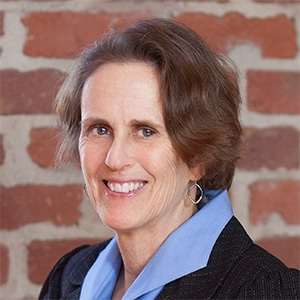
Program Area Perspective
The Arts
by Frances Phillips
The year 2016 was marked in the arts community by accomplishment and celebration, by financial anxiety and political change, and by a renewed charge to connect us across our differences and experiences. Looking back, the pragmatic worries of that year remain and anxieties about censorship, freedom of the press, and human and civil rights have only grown stronger.
How do we continue to address these concerns? One way is by investing in the stability of places where art is created and encountered. In 2016, one of Fund co-founder Elise Haas’s favorite institutions, the San Francisco Museum of Modern Art, opened a spectacular new expansion. Smaller organizations — CounterPulse, New Conservatory Theatre Center, Root Division, and Women’s Audio Mission among them — also worked to build new homes or refresh existing ones. Capital funding from the Walter & Elise Haas Fund helped in this.
The Bay Area still needs more places where community members can benefit from the arts. 2016 was a year of evictions and costly new leases, a problem that continues. The Fund’s investment in technical assistance, loans, and building acquisitions managed by the Community Arts Stabilization Trust and Northern California Community Loan Fund are easing the plight of some displaced organizations in San Francisco and Oakland.
This has been important work, but the arts are not merely places and services. They are a nexus for the creation and interpretation of meaning. They are vehicles for developing empathy. They are celebrations of distinct cultural identities. These values of art are sorely needed now.
In 2016, we saw increased income inequality in the Bay Area. Violence — the shooting of Philando Castile, the terror attack in Nice, the Pulse Nightclub massacre, and other atrocities — often seemed to shape the conversation. Native cultures met cruelty at Standing Rock. At the same time, through much of 2016 some human rights, civil rights, and environmental causes were strengthened by legislation that expanded protections. Yet, after November 2016, these gains have been rolled back or threatened.
It is said that cultural change precedes social change, but what happens to cultural change — such as the growing representation of LGBTQ characters on television or journalist Jose Antonio Vargas’s willingness to declare his undocumented status — when those who have been urged to speak up become afraid and grow silent? What happens to social change when people who feel left behind by the economy resent and demonize others, such as DACA students?
The word ‘polarized’ rose again and again in analyses of polls, speeches, and voting results. In the weeks following the election, many suggested that all of us needed to reach across the aisle and engage with people who live different experiences and hold different opinions.
That is hard to do, but art is an arena that enables connectivity. In an NPR interview with Lulu Garcia-Navarro, David Joy, who writes short fiction about poor people in the South, eloquently described his charge to the nation:
“I think you should always turn to the artists. And I think that you should read broadly, and I think that you should read things that make you uncomfortable. And I think you should experience things that are outside of your norm because all of those things challenge us. And they force us to ask hard questions. And the minute you start to ask hard questions, I think you start to understand the world in a more enlightening fashion.”
I agree. This is a value of art. And this is the value of art that the Walter & Elise Haas Fund supports.
Along with other strong work, in 2016, the Fund supported arts education for undocumented students, a theater festival featuring artists from the Middle East, an artist’s activism on behalf of immigrants’ rights, and free access to a festival of artists from Africa. In the country in which we live now, such work feels increasingly important. Recognizing this, we will continue to challenge ourselves, so we can sustain the empathy, trust, and intellectual challenge that the arts foster.
Portfolio by Strategy

Arts Education $1,201,000 (57%)
Cultural Commons $487,500 (23%)
Creative Work Fund $378,815 (18%)
Preservation of Cultural Heritage $30,000 (1%)
2016 Grantmaking
Economic Security
Read More »

Program Area Perspective
Economic Security
by Elena Chávez Quezada
From the perspective of 2017, the thread that runs through our 2016 Economic Security program work is both easy to see and of increased relevance. We worked — and continue to work — to close the gaps that divide and endanger us. We began work to dismantle the entrenched barriers that inhibit women from building wealth equal to that of men. We drew focus to the divide between the benefits enjoyed by traditional employees and workers in the gig economy, striving to increase access for all. We worked to close the distance that hinders our efforts to build more personal, less transactional relationships with our grantees.
To build equity, we must create opportunity and open access. The recent political shifts in the United States make it readily apparent that gaps like these, if left unattended, will only grow wider.
The wealth gap between men and women — notably different from the more widely discussed pay gap — is a perfect example. While women earn 79 cents on the dollar compared to men, they only own only 32 cents on the dollar. Worse, Black and Latina women own only pennies on the dollar compared to white women. These shocking disparities are the result of public policies and private practices that systemically shut out women, and particularly women of color. During 2016, the Closing the Women’s Wealth Gap Initiative — of which I am a founding partner and of which we were one of the first funders — mobilized more than 180 cross-sector stakeholders to tackle this issue through policy, communications, and research.
Another gap is one created by the changing nature of work. The gig economy continues to push many outside of the traditional employer-related safety net. This is nothing new. Original ‘gig workers’ such as domestic and day laborers have always lacked benefits and suffered as a result. In 2016, we convened a table of practitioners, funders, researchers, and government officials to explore the common issues that original and current gig economy workers face. As an outgrowth of that, we began to focus on building a new portable benefits system, one in which benefits like retirement savings, unemployment insurance, and workers comp all get tied to individuals instead of employers. Portable benefits and other strategies that promote the voices of workers could help many to close the gap between basic subsistence and reliable economic security.
We also sought to narrow the gap that disconnects us from our grantees. By awarding fewer, larger grants to nonprofits in the asset-building and workforce development fields, we seek to develop stronger relationships. More sizable grants help our grantees to take their work farther and reduce the dissonance of the inherent funder-grantee power imbalance. While our core grantmaking strategies remain the same, we began prioritizing organizations that combine direct services with the systems change and policy work that should extend benefits far beyond the immediate rank of current participants.
These gaps and others like them may seem to be widening, but we’re working to make the opposite true. In 2016, we took some important steps toward narrowing divides and building bridges. We still have a long way to go, but we’re committed to the journey.
Portfolio by Strategy

Asset Building $1,045,000 (50%)
Workforce Development $810,000 (38%)
Policy & Field Building $253,000 (12%)
2016 Grantmaking
Education

Read More »
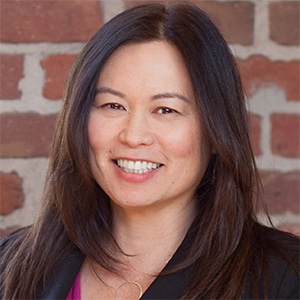
Program Area Perspective
Education
by Susan Kagehiro
The most effective public school systems in the world have one thing in common: they understand the importance of teachers. Education leaders recognize that to prepare diverse students with the skills required to thrive in today’s fast-changing world, they need to retain highly skilled teachers in every classroom.
In 2015, we posed a new question for the education program, ‘How do we help create the conditions that bring the best teaching to our most underserved schools?’ In 2016, we continued with this work, identifying serious challenges to recruiting, retaining, and supporting excellent teachers for the highest-need schools and children in the Alameda and San Francisco public school systems. And now with the hindsight offered by a tumultuous 2017, this work seems even more valuable in terms of ensuring the well-being of our children and community and the health of our local public school systems.
The Fund’s education grantmaking has always been grounded in two key principles. One is a belief that public education is a cornerstone of a healthy democracy, and the other is that the strength of our community is reflected in our ability to lift up the most vulnerable among us. Our focus on teachers and teaching flows from both of those principles.
There is solid evidence that teachers are the lever that most directly impact student learning. Investing in and supporting teachers can transform school systems, produce improved student outcomes, and serve as an engine to support community health and economic growth.
Understanding this, successful school systems structure teacher professional development around both the needs of their teachers and effective adult learning practices. Within successful school systems, teacher professional development is on-going, collaborative, relevant, and often led by veteran master teachers. Teachers have time to work with their colleagues in order to develop and hone their classroom practices. In addition, successful school systems provide opportunities throughout a teacher’s career to grow and take on different challenges.
These elements of effective professional development are seen in the work of our grantees. For example, San Francisco and Oakland International high schools — both schools that serve students who have just arrived in the United States and who are learning English — have implemented highly organized teacher and leadership teams. These teams meet regularly to discuss student work, coordinate student support systems, and ensure alignment across all content areas and grade levels.
The Mills Teacher Scholars, the African American Male Achievement Initiative, and the Black Teacher Project are other Fund grantees that facilitate teacher inquiry groups within Oakland and San Francisco public schools. These initiatives provide opportunities for teachers to learn from each other, to strengthen classroom instruction, and to meet the unique needs of their students. These efforts are collaborative, on-going, and highly relevant. They break down the isolation of the classroom and provide on-going support for work that is both complex and frequently exhausting.
As we pivoted to focus on teacher development, we learned from district administrators, principals, teacher leaders, students, and community members just how critical teacher retention is. If teachers leave, we lose their knowledge and talent, the school community destabilizes, and our children pay the price. Supported teachers feel — and are — more effective and more likely to remain in teaching. No teacher wants to fail at a job as important as teaching our future leaders. Our work in 2016 focused on helping to create the conditions within our community that teachers need to succeed and that our public school systems require to better serve our most vulnerable students and communities.
Portfolio by Strategy

Teacher Pipeline $685,000 (37%)
Teacher Retention $635,000 (34%)
Teacher Practice $460,000 (25%)
School Leadership $85,000 (4%)
2016 Grantmaking
| Organization | Amount |
|---|---|
| African American Male Achievement | $250,000 |
| Aim High for High School | $50,000 |
| Bay Area Parent Leadership Action Network | $70,000 |
| Californians for Justice Education Fund | $30,000 |
| Center for Wellness and Achievement in Education | $40,000 |
| Education Outside | $30,000 |
| Internationals Network for Public Schools | $120,000 |
| National Public Education Support Fund | $25,000 |
| New Teacher Center | $170,000 |
| OUSD Community Schools and Student Services Department | $55,000 |
| OUSD English Language Learner and Multilingual Achievement Office | $200,000 |
| Parent Advisory Council | $85,000 |
| Parents for Public Schools of San Francisco, Inc. | $125,000 |
| Partners in School Innovation | $65,000 |
| Reach Institute for School Leadership | $70,000 |
| Roses in Concrete | $150,000 |
| San Francisco Education Fund | $40,000 |
| SFUSD Educator Housing Project | $45,000 |
| SFUSD Unaccompanied Immigrant Children Program | $80,000 |
| The Black Teacher Project | $50,000 |
| UC Berkeley Graduate School of Education | $35,000 |
Jewish Life

Read More »
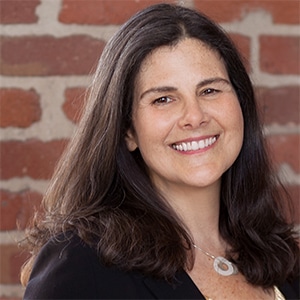
Program Area Perspective
Jewish Life
by Stephanie Rapp
A core tenet of the Fund’s Jewish Life program is the belief that social justice is a mandate. This remained true in 2016, even while a volatile election campaign created new divisions and heightened existing tensions between Americans. Looking back from the perspective of 2017, a year of national upheaval, our grantmaking in 2016 has particular resonance.
The Fund’s Jewish Life program has long had a history of supporting interfaith partnerships, including efforts to connect Jewish and Muslim communities. In 2016, we supported many such interfaith partnerships that fostered education, awareness, and social action.
For the first time, we awarded a grant to the Graduate Theological Union (GTU), an institution of higher learning. GTU brings together scholars from the world’s diverse religions so they can advance knowledge, share inspiration, and collaborate on solutions to problems shared by those of different faiths. Our support specifically enabled the Graduate Theological Union to bring together its Jewish and Muslim studies departments through programs and scholarship that highlight the commonalities between these two religious minority communities in America. Now, as Islamophobia and anti-Semitism again are frighteningly on the rise, this educational alliance is particularly well-timed and valuable.
The Fund’s continued support of the Islamic Networks Group (ING) also enabled that organization’s speakers bureau to reach more students in schools throughout the Bay Area. ING-hosted conversations highlight the values and traditions of Jews and Muslims in America; they help participants and audiences to better understand the practices and cultures of these two Abrahamic religions. ING also brings awareness to students and civic groups, educating about extremism within religions and addressing how communities meet the challenges posed by the distortions of their beliefs.
Faith-based organizing networks, such as our grantee Faith in Action, unite people of many faiths to advocate for economic and social justice. Faith in Action’s mission is to develop community leaders who will organize for solutions to racial and economic injustice in the Bay Area. In 2016, this organization galvanized its more than 40 member congregations, representing 45,000 people, to work on issues affecting our local communities. Central to Faith in Action’s work is support for immigrant rights. Since the 2016 election, immigrants and refugees have been increasingly vilified. Networks like these play a critical role in offering support and training to communities that face increased scrutiny and fear of deportation.
Our country reels under heightened levels of anti-Semitism, Islamophobia, racism, homophobia, and cultural division. That’s the hard news. The good news is that the grantees in our portfolio are on the front lines of combatting bigotry in all its forms. They apply the moral suasion of clergy, of spiritual and religious practices, and of the values of kindness and compassion that are central to all religious traditions. Together they advocate for the civil liberties for all Americans.
We are stronger together. In these turbulent and often frightening times, the Fund’s Jewish Life grantees are a vital part of the resistance.
Portfolio by Strategy

Diversity $822,500 (39%)
Justice $465,000 (22%)
Innovation $335,000 (16%)
Legacy $250,000 (12%)
Building Partnerships $240,000 (11%)
2016 Grantmaking
Safety Net
Read More »
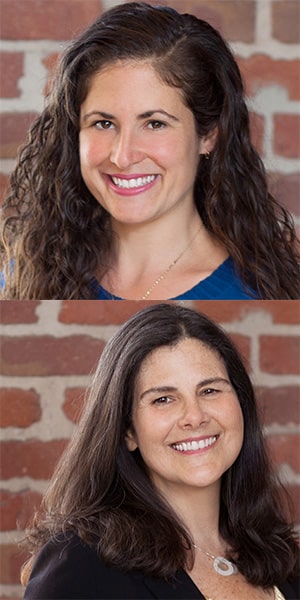
Program Area Perspective
Safety Net and Other Grantmaking
by Elena Chávez Quezada and Stephanie Rapp
The 2016 presidential campaign and election were challenging for many of us, but particularly hard for the more than 500,000 Bay Area residents who every day live in poverty. The 30 safety net organizations supported by the Walter and Elise Haas Fund rely on federal aid, aid that is uncertain given a different set of federal priorities. As a result, safety net organizations and the clients they serve fear being left even further in need.
At the Walter & Elise Haas Fund, our Safety Net program sets out to help those on the margins. We want our neighbors to regain their economic security and to reap all the benefits of full engagement with society. In 2016, as in years before, we funded agencies that continue to make a very real difference in the lives of low-income people by offering food and shelter. In a year that was marked by anti-immigrant rhetoric, the safety net agencies we support continue to serve as safe spaces where people can receive services regardless of immigration status, religious beliefs, sexual orientation, or race.
Our safety net grantees serve the vast majority of very low-income people in San Francisco and Alameda counties. And the number of community members who need the help of these safety net grantees is growing. This skyrocketing demand comes on top of operational challenges — such as the impact the Bay Area’s tight housing market has on nonprofit employees. Some agencies have been unable to fill key positions as a result of spiraling housing costs.
But there is good news, too.
The City and County of San Francisco’s newly formed Department of Homelessness and Supportive Housing opened its first Navigation Center in 2015. This is a new service delivery model that provides short-term shelter for long-term homeless individuals, couples, and groups of friends, along with their pets and possessions. The first Center opened in the Mission as a collaboration between the San Francisco Interfaith Council and Episcopal Community Services, both Fund grantees. Because there are few barriers to entry and clients may come and go 24 hours a day, the Navigation Center is able to reach and serve some of those people who are experiencing homelessness but who remain unserved by the traditional shelter system. More Navigation Centers opened in 2016, and more still are coming. Since the program’s pilot facility opened, over 1,300 highly-vulnerable people have entered the Navigation Centers and almost two-thirds of them have been housed.
In addition to providing general operating grants to key safety net organizations, the Walter & Elise Haas Fund also bolsters efforts to change policy concerning public benefits for low-income families. California is one of only two states that does not allow Supplemental Security Income (SSI) recipients to also receive food stamps — known in California as CalFresh. Both the Western Center on Law and Poverty and the Alliance to Transform CalFresh are working to ensure that the most economically vulnerable individuals among us receive the full support available from the government.
Because of the uncertainty of the political and funding climate, the Walter & Elise Haas Fund recognizes the importance of remaining a consistent funder in turbulent times. We offer a stabilizing hand and will continue to do so, regardless of the political environment.
Portfolio by Strategy

Safety Net $1,000,000 (29%)
Other Designated $264,650 (8%)
Mission-Related $556,570 (16%)
Capital $1,066,360 (31%)
Legacy $555,250 (16%)


